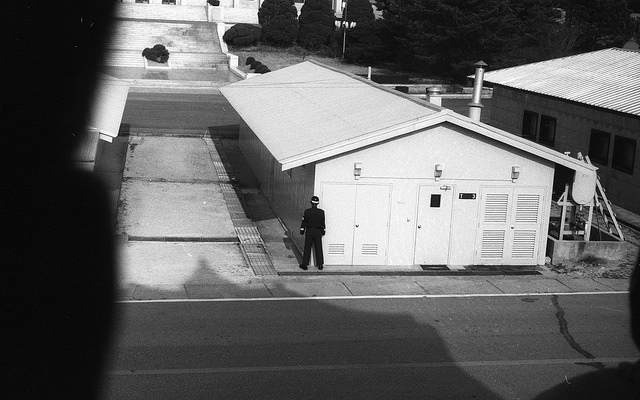
The latest crisis on the Korean peninsula is distinctive for a number of reasons. First, it involves a bunch of new or newish leaders in Kim Jung-un, Donald Trump, Xi Jinping and Moon Jae-in. Second, it’s been brewing more or less continuously for nearly two years. And third, it involves new military capabilities. Above all, of course, a DPRK on the cusp of possessing an operational nuclear weapon capability adds immeasurable consequences to the risk of accident, misinterpretation, miscalculation and improbable coincidence that attend any international dispute.
For decades, successive US administrations have found opportunities to quietly remind Pyongyang that, if it crosses the threshold to war, the DPRK will pass into history. President Trump has taken a novel approach: he has not only succumbed to the posturing challenge that North Korea routinely throws out in crises, but has elected to bring every dimension of America’s military power to bear in the slanging match. At one level, that might support an assessment that the leaders are harmlessly blowing off steam. But there’s a deeper change buried in the current circumstances on the Korean peninsula that the players would be wise to consider.
In 1949–50, North Korea persuaded the USSR and the PRC that, with modest assistance from them, it could take the south by force and secure the whole peninsula for the communist camp. The gamble nearly paid off, but it took the massive intervention of PRC forces to avert disaster and, eventually, produce the armistice and the division of the peninsula. Over the ensuing half-century, the USSR and the PRC were broadly content to leave the US with the problem of stability on the peninsula. They remained aligned with the DPRK, even as that state veered off on its singular evolutionary path, but shared an interest in not allowing Pyongyang to become strong enough to contemplate unilateral action that might again drag them into a confrontation with the US. What has to be considered now is that, with nuclear weapons and ballistic missile delivery systems, Pyongyang may believe that it’s outgrown the constraints that its erstwhile allies have imposed for more than five decades.
How did this happen? We know that the DPRK has long prioritised ballistic missiles and assembled a modest community of competent and resourceful scientists and technicians. That community eventually produced souped-up versions of first-generation Soviet short-range ballistic missiles that were good enough to sell to Pakistan and Iran, along with the production know-how. The end of the Cold War boosted the DPRK program by providing access both to a wider array of missile systems and to skilled ex-Soviet personnel. The missile transfer to Pakistan in the mid-1990s may have been a barter arrangement, with technology for uranium enrichment centrifuges going in the other direction, probably organised by the infamous AQ Khan. Khan is also known to have possessed a Chinese design for a compact, lightweight nuclear warhead that he sold to Libya and tried to sell to Iraq and Iran. Whether he did so with the DPRK is not known.
The DPRK conducted its first nuclear test explosion in 2006 and confirmed the maturity of that capability by its fourth and fifth tests, both in 2016. On the missile front, the DPRK seemed to be inching hesitantly towards longer-range missiles. Around three or four years ago, however, the missile program seemed to surge: the rate of successful launches went up, and the performance of particular missile types in successive launches improved markedly. Western intelligence agencies were taken by surprise but had to concede that the time frame to a DPRK with a reliable capacity to deliver nuclear weapons over long ranges had probably shrunk to a couple of years. Two significant remaining technological hurdles were identified:
- Could the DPRK develop a vehicle for the warhead that could withstand the heat and turbulence of atmospheric re-entry?
- Could it reduce the size and weight of its nuclear devices to fit into such a re-entry vehicle?
Last week, the US Defense Intelligence Agency, presumably drawing on information gleaned from the two long-range missile tests that the DPRK conducted in July 2017, assessed that those hurdles had been essentially overcome.
Doubtless, the US and other intelligence communities will be asking how the DPRK pulled everything together so quickly. Was it sheer momentum that had been underestimated, access to new sources of critical technologies, or the availability of new expertise? The bigger issue, however, is the possibility that, for the first time since its defeat in the 1950–53 war, Pyongyang may feel that it has the capacity to run its own game. If anything can produce a genuine sense of common purpose among the US, the PRC and the Russian Federation, that would have to be among the strongest candidates.
 Print This Post
Print This Post